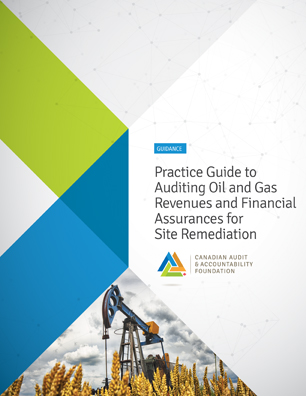|
|
Practice Guide to Auditing Oil and Gas Revenues and Financial Assurances for Site Remediation
|
 |
The extraction of oil and gas resources can also create financial liabilities related to the remediation of project sites once operations have ceased. Governments are expected to mitigate the risk of inheriting liabilities for site remediation by collecting financial assurances from oil and gas producers or by establishing and managing a remediation fund to which producers must contribute. Failure to implement proper systems and practices may result in taxpayers having to foot the bill for cleaning up oil and gas extraction sites. CCAF is pleased to announce the release of our newest publication: Practice Guide to Auditing Oil and Gas Revenues and Financial Assurances for Site Remediation – A guide that will help public sector auditors in Canada and abroad to plan, carry out and report on audits of the oil and gas sector. Login below or register for membership to access. How will this guide help? The Practice Guide provides information and guidance that will help performance auditors to complete the successive steps involved in planning, conducting, and reporting the results of an audit of the oil and gas sector. This guidance will be especially useful to auditors who wish to audit:
In addition to examples of audit questions, objectives and criteria, the Practice Guide includes information on the following topics:
The Practice Guide also includes a glossary and a list of references (with hyperlinks to quickly access audit reports and other relevant documents). How was this guide developed? The development of CCAF practice guides would not be possible without the significant contributions of the thought leaders and professionals from across Canada who provide their time and expertise, and bring their diversity of experience to bear on the content. Members of the core project team, who guided the design and development, included representatives from the:
The guide also benefitted from the input of representatives from:
Login below or register for membership to access. |


 In Canada and other resource-rich countries, the extraction of oil and gas resources can generate a significant proportion of regional and national government revenues. However, these revenues can vary significantly from year to year and from project to project, making their assessment and collection by governments a complex task that requires reliable information, sufficient capacity, strong controls and adequate oversight.
In Canada and other resource-rich countries, the extraction of oil and gas resources can generate a significant proportion of regional and national government revenues. However, these revenues can vary significantly from year to year and from project to project, making their assessment and collection by governments a complex task that requires reliable information, sufficient capacity, strong controls and adequate oversight.